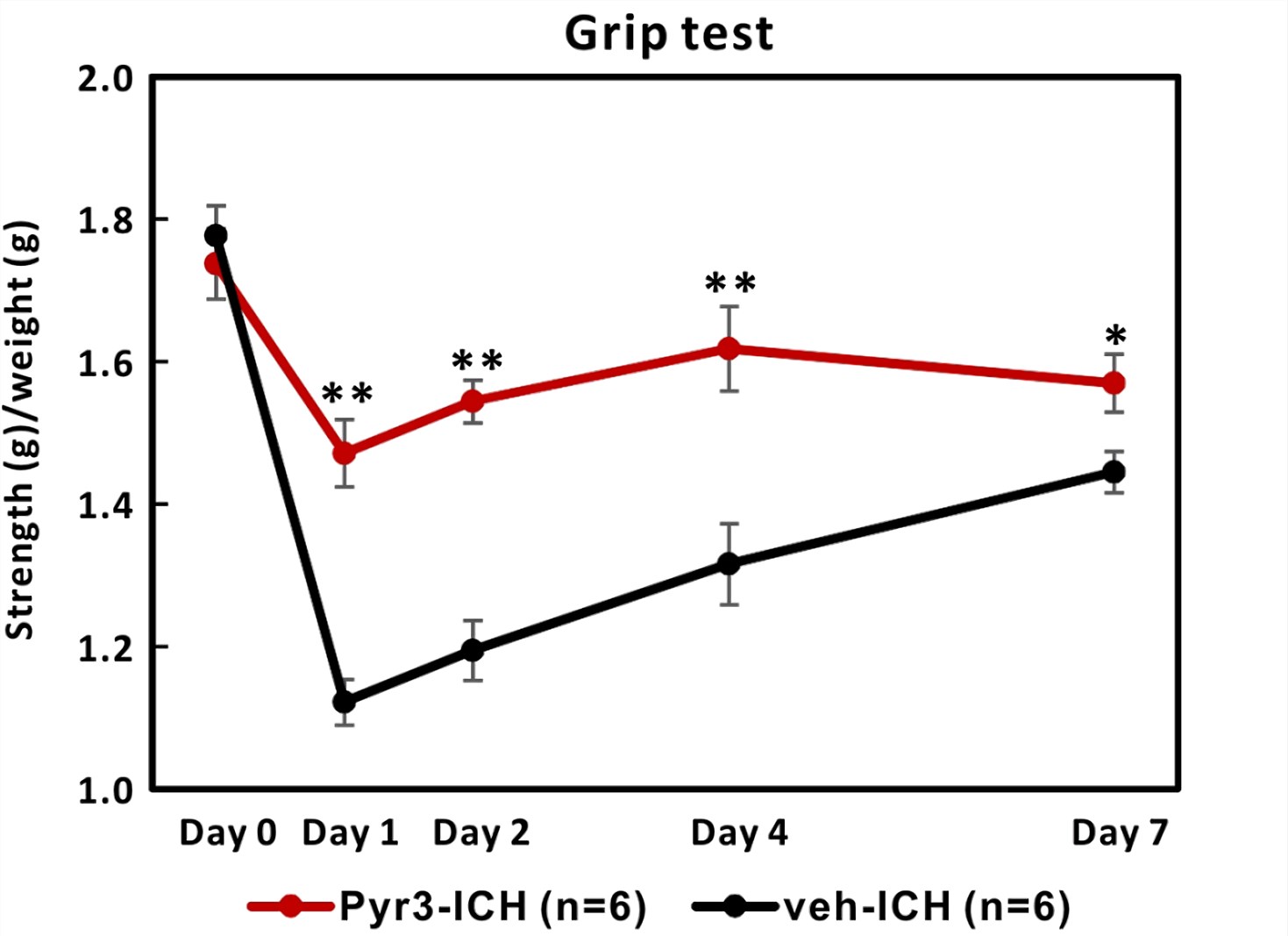Grip Strength Test
Grip bar strength test is the most commonly used in vivo test for assessing impaired limb strength (forelimb and/or hindlimb) caused by pathology progression or during therapeutic interventions. Specifically, Creative Biolabs conducts the grip strength test to phenotype strains of transgenic mice and evaluate novel chemical entities for their effect on motor performance.
Introduction of Grip Strength Test
The grip strength test is a simple and rapid noninvasive method widely used in scientific research to assess the muscle force of forelimbs/hindlimbs in vivo. The animal is lowered toward the platform and is allowed to grasp a horizontal metal bar or grid with its forelimb/hindlimbs and then pulled backward by the experimenter until it releases its grip. The bar or grid is attached to a transducer and the force produced during the animal pulling is repeatedly measured at intervals (e.g., weekly) during experimental protocol. Forelimb and hindlimb assessments can be measured simultaneously using dual sensor models or in separate trials using single stand model. The values are expressed in pounds, kilograms, or newtons.
Features of Grip Strength Test
- This test is noninvasive and does not produce any damage to the muscle. Therefore, it is a useful tool to objectively quantify the muscular strength of rodents (mouse and rat), and to assess the effect of drugs, toxins, muscular (i.e. myopathy) and neurodegenerative diseases on muscular degeneration.
- When the test is performed in a continuous manner, the animals do not lose interest in the test over the time period.
- This is an in vivo test and shows a certain level of variability and requires good experience to achieve the best results.
- This test has to be performed for 3-4 times during a single trial, with 1 min time lapse between each determination. The testing requires several minutes for a single animal. This leads to a considerable time investment, especially when several experimental groups are being concurrently assessed.
 Fig.1 Grip strength test in Pyr3 treated intracerebral hemorrhage (ICH) rats. (Chiu et al. 2017)
Fig.1 Grip strength test in Pyr3 treated intracerebral hemorrhage (ICH) rats. (Chiu et al. 2017)
Creative Biolabs also conducts other behavioral tests for motor function assessment:
Creative Biolabs provides a wide range of behavioral tests (e.g., motor activity, cognition, anxiety & depression) for mice phenotyping as well as drug screening and efficacy assessment. Moreover, these tests can be customized to suit the specific scientific needs of our clients. Additionally, new behavioral tests are constantly being developed and validated.
Of note, as an undisputed specialist in neurological disease drug development, Creative Biolabs has an extensive range of rodent neurological disease models for drug efficacy studies, which are listed below for your review:
For more information, please contact us or send us an inquiry.
Reference
- Chiu, C. D.; et al. Inhibition of astrocytic activity alleviates sequela in acute stages of intracerebral hemorrhage[J]. Oncotarget. 2017, 8(55):94850-94861.
For Research Use Only.
